With zesty julienned ginger and deep-fried tofu strips, fragrant Japanese Ginger Rice is delicately seasoned with soy sauce and mirin. This authentic recipe has a wonderful aroma and spicy kick that pairs well with many Japanese dishes.
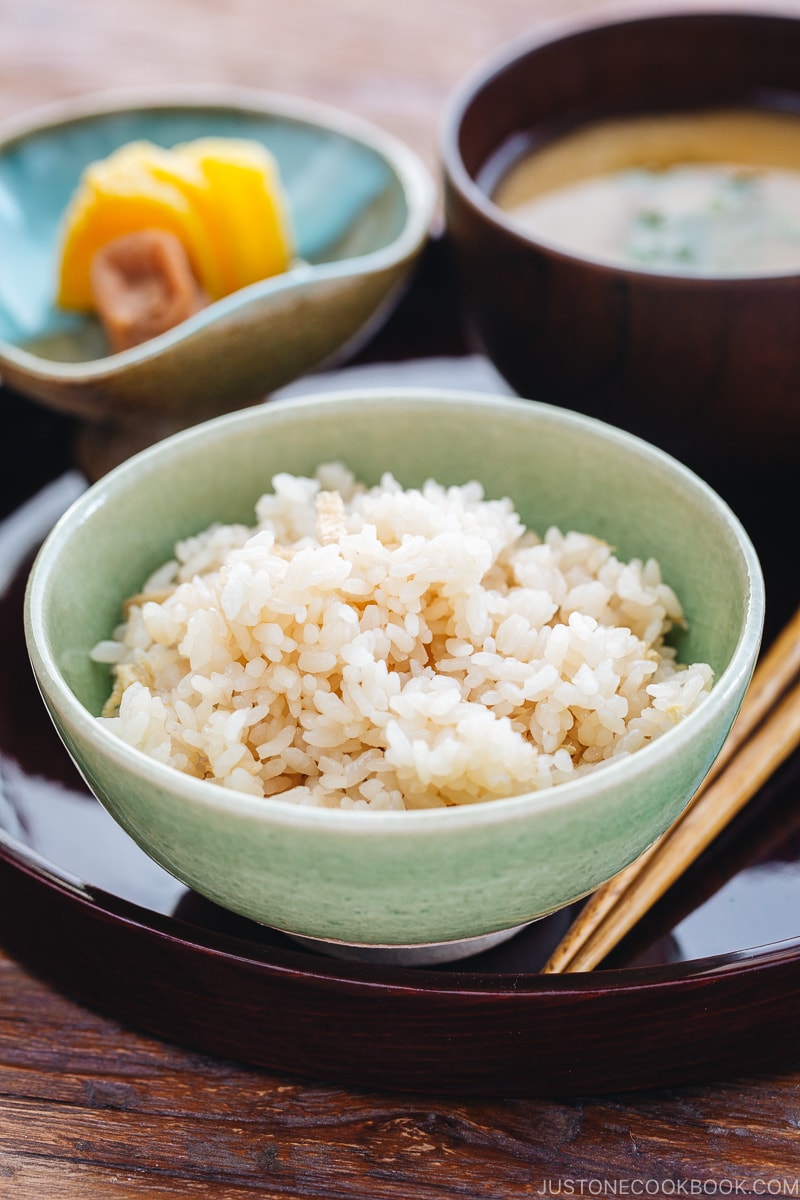
Have you seen young ginger (新生姜) in recipes before and wondered what it is? Compared to “regular” ginger, young ginger has thin skin and some parts may be a little bit pinkish. As young ginger is juicier and has a mild taste, it is often used in pickled ginger/sushi ginger (Gari ガリ in Japanese) or in this delicious Ginger Rice.
What is Young Ginger?
Young ginger is in season during the summertime, usually between June and August in Japan. Young ginger and regular ginger that you normally see in the grocery store are actually the same. When you leave the young ginger under certain conditions for about 2 months, it turns into regular ginger.
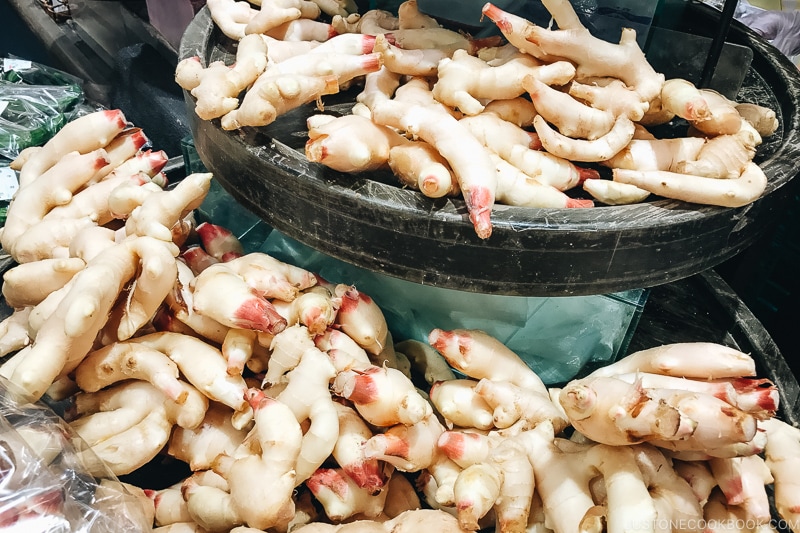
During this 2 month period, the pink color turns into a golden color and the skin gets hardened as it matures. The ginger can actually last close to 1 year if you can control the moisture and temperature.
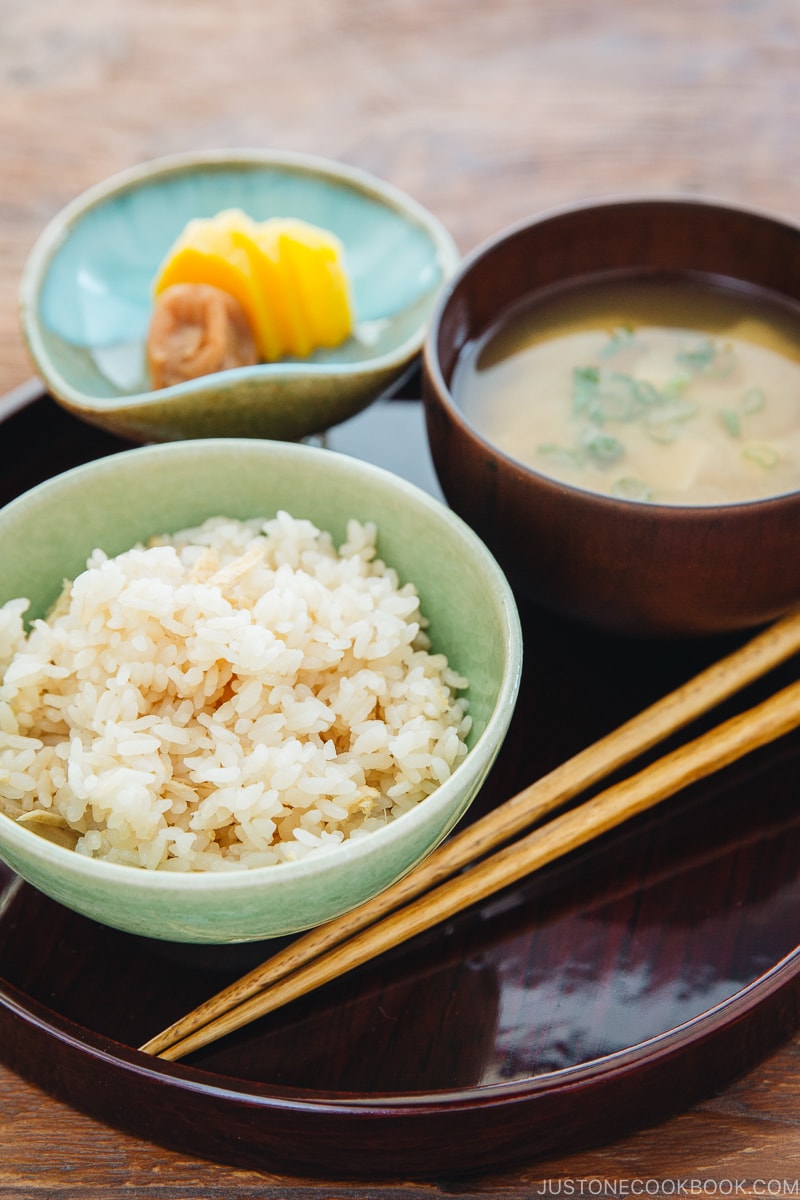
The Usage of Ginger in Recipes
Ginger adds a nice aroma, zest, and spicy kick to Asian cuisines. It tastes great with food, but it’s also very good for you and your body. Not only does ginger’s unique powers keep you warm, but it’s also an appetite stimulant and digestive aid. There are also other health benefits, and if you’re interested, continue reading here.
Young ginger can be found in Asian grocery stores during the summertime. If it’s out of season or you cannot find any, you can substitute it with regular ginger, as I did for this recipe. If you’re not a big fan of ginger, reduce the amount of ginger by 1/3 or half, especially if you’re not using young ginger. I use the same amount of ginger as young ginger and my family enjoyed it.
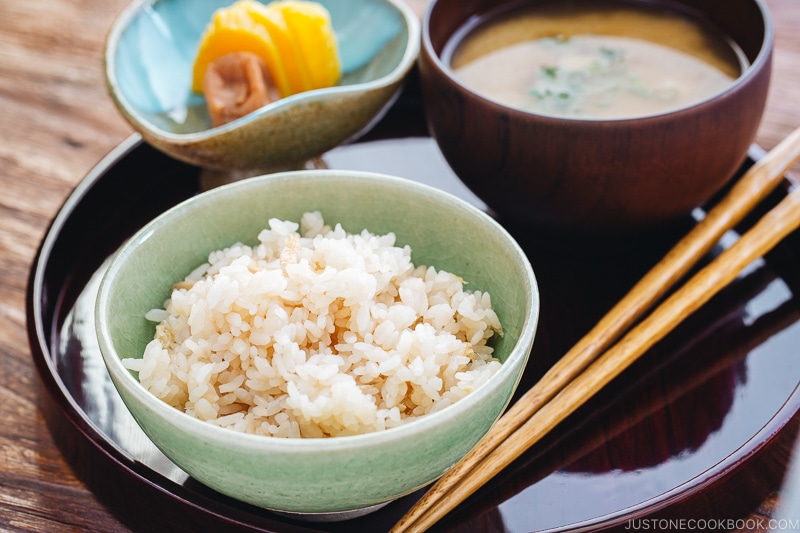
What Dish to Go with Ginger Rice
We recently ate Ginger Rice and Miso Salmon together and it was fantastic.
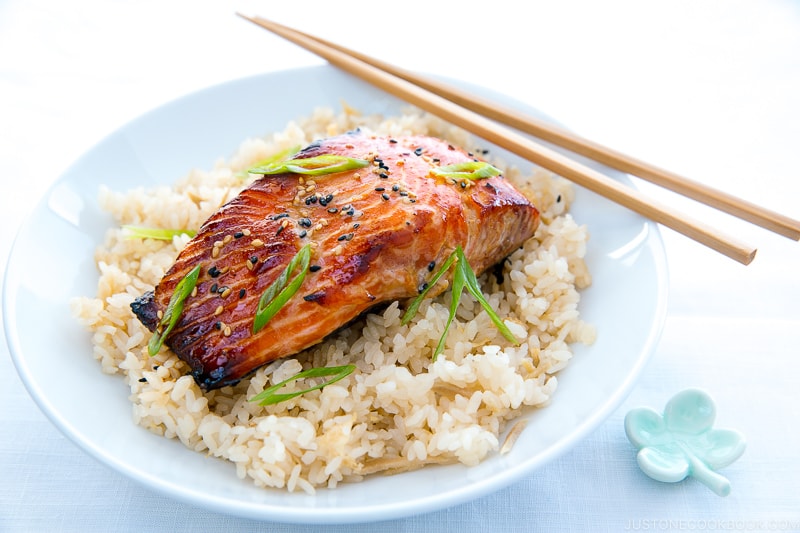
Wish to learn more about Japanese cooking? Sign up for our free newsletter to receive cooking tips & recipe updates! And stay in touch with me on Facebook, Pinterest, YouTube, and Instagram.
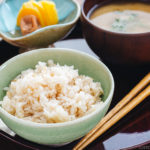
Ginger Rice
Video
Ingredients
- 1½ cups uncooked Japanese short-grain white rice (2 rice cooker cups, 360 ml)
- 1 piece aburaage (deep-fried tofu pouch) (0.7 oz, 20 g; or substitute crispy fried tofu cubes from an Asian grocery store, blanched to remove excess oil)
- 2 inches ginger (preferably young ginger so it‘s less spicy; 1 oz or 30 g)
- 1⅓ cups water
For the Seasonings
- 1 Tbsp soy sauce
- 1 Tbsp sake
- 1 Tbsp mirin
- ¼ tsp Diamond Crystal kosher salt
Instructions
- Gather all the ingredients.
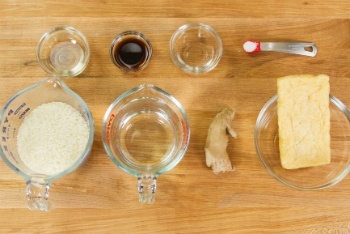
- Rinse 1½ cups uncooked Japanese short-grain white rice and drain well. For detailed instructions on rinsing and cooking Japanese rice, read my How to Make Rice post.

- Boil some water in a small saucepan and pour the boiling water onto 1 piece aburaage (deep-fried tofu pouch) set in a strainer in the sink. This step will rinse off the manufacturer’s oil and improve the flavor.
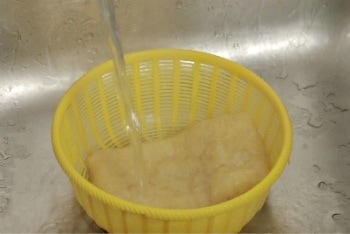
- Cut the aburaage in half lengthwise, then slice crosswise into thin strips.
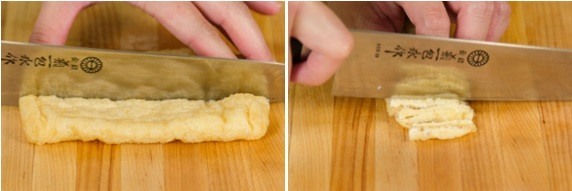
- Peel 2 inches ginger and cut it into julienned pieces.

- In a 2-cup measuring cup, mix all the ingredients for the seasonings: 1 Tbsp soy sauce, 1 Tbsp sake, 1 Tbsp mirin, and ¼ tsp Diamond Crystal kosher salt. Then, add 1⅓ cups water to the seasonings so that the liquid totals 1½ cups or 360 ml (equal volume as the rice).

To Soak and Cook the Rice
- Place the well-drained rice into the rice cooker. No rice cooker? You can also make rice in a pot over the stove, Instant Pot, or donabe. Pour the measured liquid into the rice cooker and mix well. Then, scatter the ginger and aburaage on top of the rice. Do not mix. The rice will not cook evenly if mixed with other ingredients.
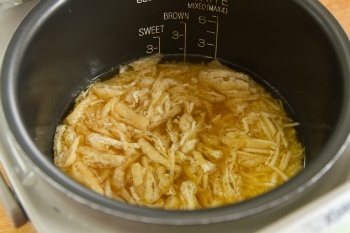
- Soak the rice for 20–30 minutes. Then, start cooking. Select the Mixed Rice option if you have it (see Notes below). When the rice cooker turns off, let the rice steam for another 10 minutes before opening the lid. Fluff the rice with a rice paddle and serve.
To Store
- You can keep the leftovers in an airtight container and store it n the freezer for up to a month.
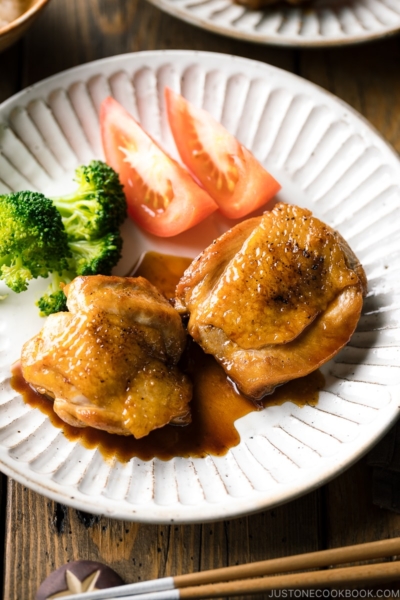
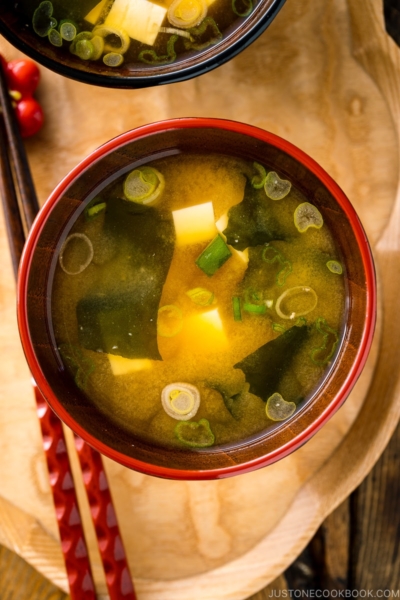
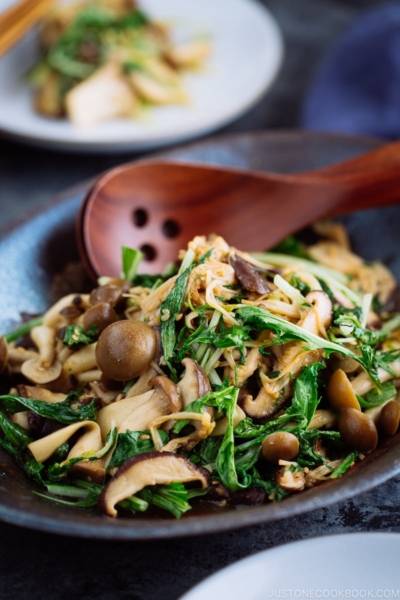
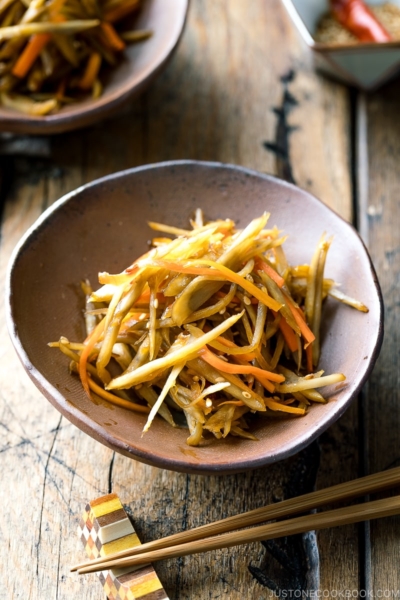




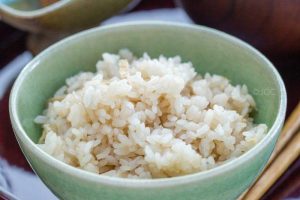
A great rice recipe that fits to lots of other recipes
Hello there! We are glad to hear you enjoy this dish!
Thank you for taking the time to review Nami’s recipe!🤗
Really flavourful rice that goes perfectly well with the miso salmon, I never thought about doing it and it’s so easy !
I didn’t have young ginger nor aburaage, but as we enjoy regular ginger and (not too much) spicy food, it was still delicious.
I will try it with aburaage made from scratch next time. Do you think making aburaage from regular tofu instead of a firm one like written on your aburaage’ s post can still work ?
Thank you for sharing your recipes, I cannot wait to try new ones !
Hi, Victoria! We’re delighted to hear you enjoyed Ginger Rice with Miso Salmon as much as we do!
The best way to make homemade aburaage is to use firm tofu. Regular tofu will easily come apart. We hope this helps. Happy cooking! 🥰
When the mixed rice is cooked, do I have to remove ginger and tofu or do I mix it with the rice?
Hello there! You can mix them and enjoy them with rice.
Thank you for trying Nami’s recipe.🙂
Nami, long time fan from way back when. Congratulations on your continued success and evolution of JOC. For this recipe, can I use myoga instead of going ginger? Or is it too fibrous?
Hi Yonsei in So. Cal! Thank you very much for reading Nami’s post and for your love and support!❤️
For this recipe, Yes, you can use Myoga and make this dish into Myoga Rice. You can thinly slice 3~4 Myoga, so it would not be too fibrous.
We hope this helps!
How can I modify this with no tofu and just cooking on stove top?
Hi Sara,
If you can’t find Aburaage (deep-fried tofu pouch), you can omit it or add a little bit of oil.
One of JOC readers uses Inari Age (the tofu pouch for Inari Sushi) for this recipe and he said it’s really good, too!
As for the stovetop instruction, Please see the “RECIPE NOTES” at the end of this recipe and check https://www.justonecookbook.com/how-to-cook-rice/
I hope this is helpful.
Nami, this looks delicious! Would I be able to cook it in the instant pot using your method for making plain Japanese rice, or would it burn on the bottom? As I recall, the last time I tried making instant pot takikomigohan it gave me the “burn” message and stopped cooking. I threw out my rice cooker since the instant pot’s stainless steel makes me less worried than the non-stick coating the rice cooker had (and I can’t find any without non-stick coating!).
Any advice you have would be greatly appreciated on how to tweak this for IP. Thank you!
Hi Elizabeth! I haven’t tried cooking this recipe in the IP so I can’t say for sure, but it should work. Make sure to rinse the rice well (so no excess starch build up on the bottom). Don’t mix the ingredients and they should be on top when you are cooking. 🙂